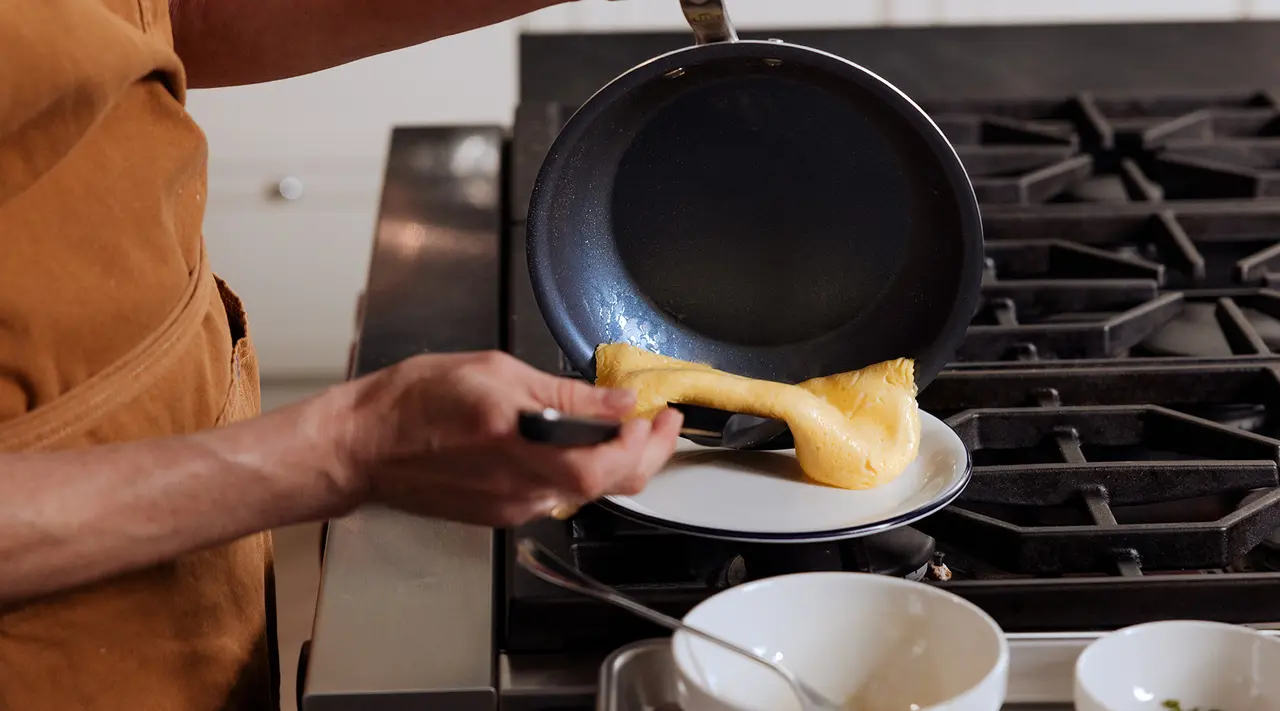Non stick cookware is appealing for its promise of culinary convenience. And even if you look even slightly beyond its reputation, you’ll discover that it’s so much more than “easy”—and definitely not just for novice cooks. Even in three Michelin-starred restaurants, you’ll find non stick frying pans—like ours—in regular rotation.
To highlight what makes our ProCoat Non Stick so special, we’ve answered all your frequently asked questions below. From where it’s made to what it's best for cooking, keep scrolling for everything you need to know before choosing the non stick cookware that’s right for you.
- What Can You Cook in Non Stick?
- How Does Non Stick Compare to Other Cookware Types?
- How Long Does Non Stick Cookware Last?
- What Is Our Non Stick Cookware Made Of?
- Where Is ProCoat Non Stick Cookware Made?
- How Do You Cook With Non Stick Cookware?
- Do Chefs Use Non Stick Cookware?
- Does Non Stick Cookware Come With Lids?
- Is Non Stick Compatible with Induction Stoves?
- What Utensils Can Be Used With Non Stick Cookware?
- Can Non Stick Go in the Oven?
- Can You Recycle Non Stick Cookware?
- Is Non Stick Sustainable?
- Ready to Shop?
What Can You Cook in Non Stick?

Our ProCoat Non Stick is our go-to for cooking eggs, pancakes, grilled cheeses, and even fish. It’s the perfect tool for foods with a high potential for sticking, or for when you want to minimize cleanup. Some professional chefs prefer non stick over other cookware for delicate proteins like fish or scallops, speedy pasta prep on the line, or picture perfect omelettes.
Non stick is also the best way to reheat leftovers—better than your microwave. Reheating in a non stick skillet allows you to restore de-crisped proteins and dried out pastas to their former glory, thanks to the 5-ply stainless steel construction developed specifically for even heating. Eating microwaved leftovers, on the other hand, is a game of "how hot is the outside vs how cold is the inside."
How Does Non Stick Compare to Other Cookware Types?
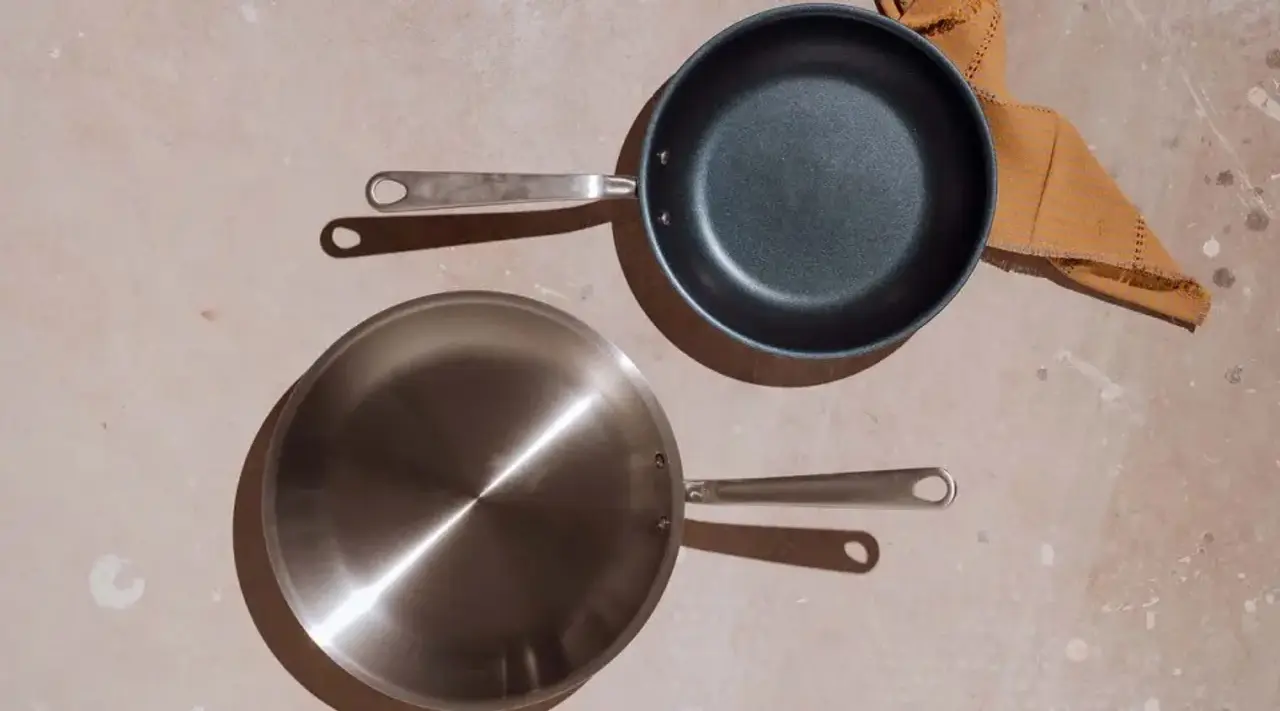
Non stick has an unfair reputation as being lower-quality or less serious than materials like carbon steel and stainless steel, but it’s simply not true. High quality non stick pans (like ours) can be versatile, powerful pieces of equipment—they just have to be made correctly.
- Non Stick vs. Stainless Steel: Our non stick pans are built from the same body as our Stainless Clad line, making these two materials very similar—and equally non-negotiable in a well-stocked kitchen. Non stick is better for delicate ingredients like fish and eggs, while stainless steel is great for searing and high temperature cooking. We cover these differences (and more) in our in-depth guide to non stick vs. stainless steel.
- Non Stick vs. Carbon Steel: We’ve also compared non stick versus carbon steel and found that—as with non stick and stainless clad—neither is definitively better than the other. Carbon steel, as a naturally non stick alternative, is better able to tolerate higher temperatures and can recover from pretty much anything you put it through. Non stick is typically better suited to medium-low temperatures, is non stick from day one, and doesn’t require any seasoning. Learn more in our guide comparing carbon vs. non stick.
- Non Stick vs. Ceramic: Of the different cookware materials, traditional coated non stick is going to behave most similarly to ceramic non stick. These are both coated with layers of a non stick coating to prevent sticking, but the main difference lies in how said coating is manufactured. For more information, read our comparative guide between ceramic and traditional non stick cookware.
How Long Does Non Stick Cookware Last?

Typically, non stick cookware will last between two to four years, but exact numbers will range based on construction quality and how often it's used. For example, a pan used once very two weeks for scrambled eggs will outlast one used every night of the week over high heat.
What Is Our Non Stick Cookware Made Of?
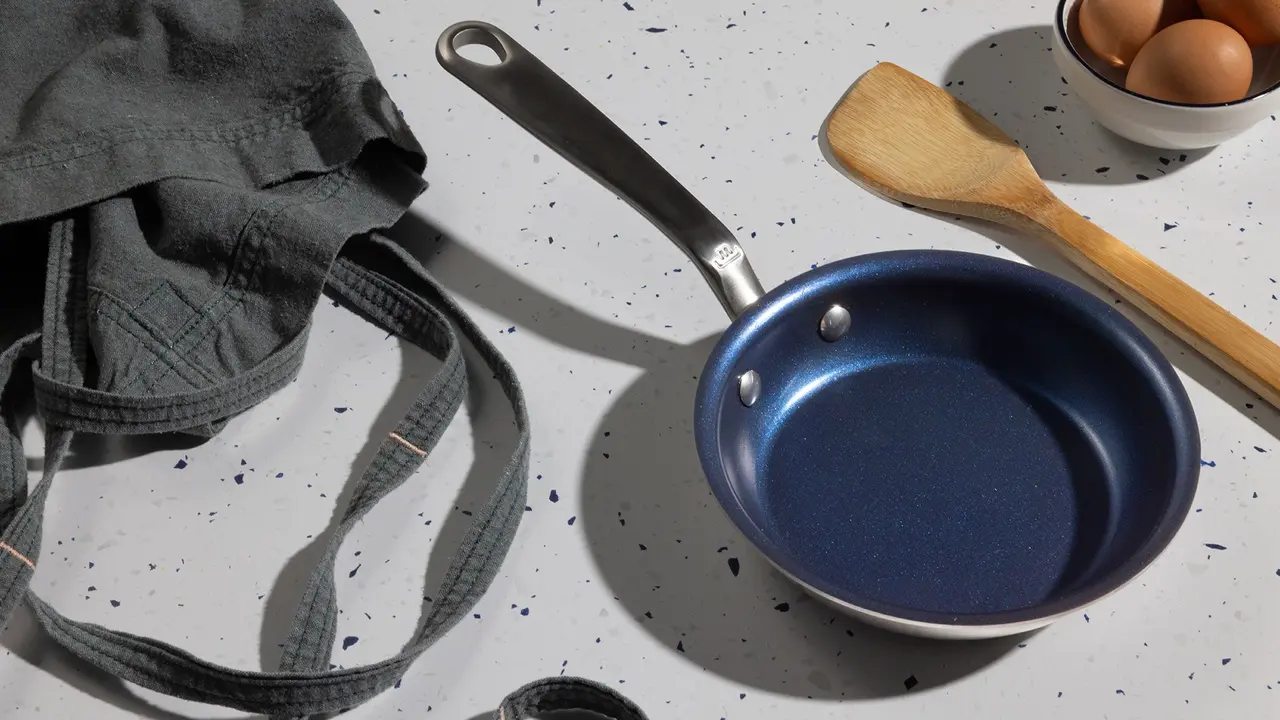
Most non stick cookware follows the same general construction pattern (but quality can differ wildly based on exact materials used): layers of non stick coating are applied over top of a metal base.
The base of our ProCoat Non Stick is our Award-Winning Stainless Clad Cookware. Each piece is layered with five sheets of four different metals to maximize its temperature control and heat retention ability. Each piece is then coated with multiple layers of a professional-quality non stick coating, to result in an easy-to-clean, fast-heating pan with remarkable temperature control and response.
Where Is ProCoat Non Stick Cookware Made?
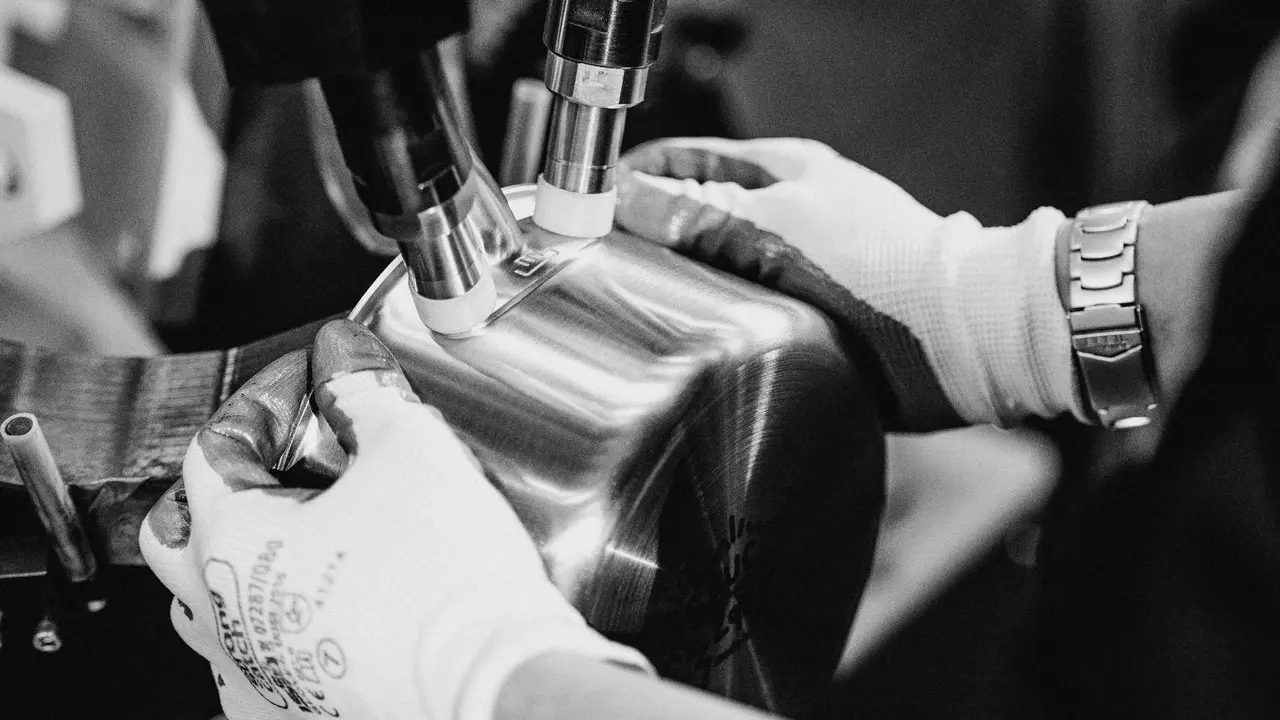
Our ProCoat Non Stick Cookware is assembled by multi-generational artisans in the USA and Italy using global components. From Saucepan to Saute Pan, we work very closely with our partners to turn top-quality raw materials into the best non stick cookware available.
How Do You Cook With Non Stick Cookware?
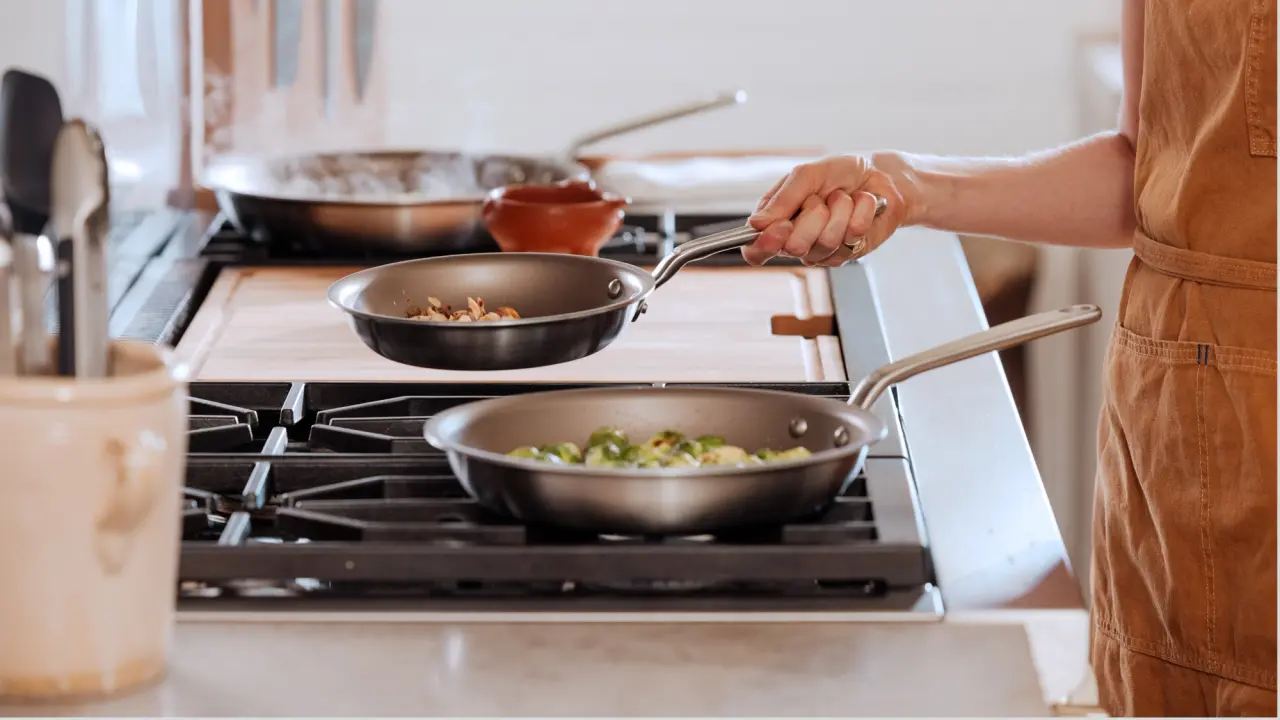
Stovetop Cooking
Always preheat your pan with fat or oil in it. Non stick cookware is not ideal for dry frying, as this can cause the coating to wear out quickly. Do not use cooking sprays, which cause harmful buildup that can damage the coating over time.
In the Oven
While non stick is best suited to medium-heat stovetop cooking, our ProCoat Non Stick Pans are completely safe up to 500F—even in the oven.
Use the Right Utensils
Do not use sharp-edged metal utensils or knives inside your cookware, as they may scratch the surface and compromise both the non stick capabilities of your pan. We prefer non stick-friendly utensils, like wood or silicone.
Hand Wash Only
Allow your pan to cool completely before hand washing with warm soapy water and a soft sponge. Dry immediately, and never put your non stick pan in the dishwasher.
Store Correctly
If you stack your pans during storage, layer a Pan Protector, dish towel, trivet, or other protective layer in between the pans to protect the non stick coating. Never use your non stick for storing food.
Do Chefs Use Non Stick Cookware?

It may seem surprising—because non stick cookware is typically associated with home cooks—but professional chefs use non stick cookware in their kitchens every single day. In fact, professionals who don’t use non stick often refrain from doing so simply because it is pricier than other options—not because it’s “worse” than stainless or carbon steel.
Does Non Stick Cookware Come With Lids?
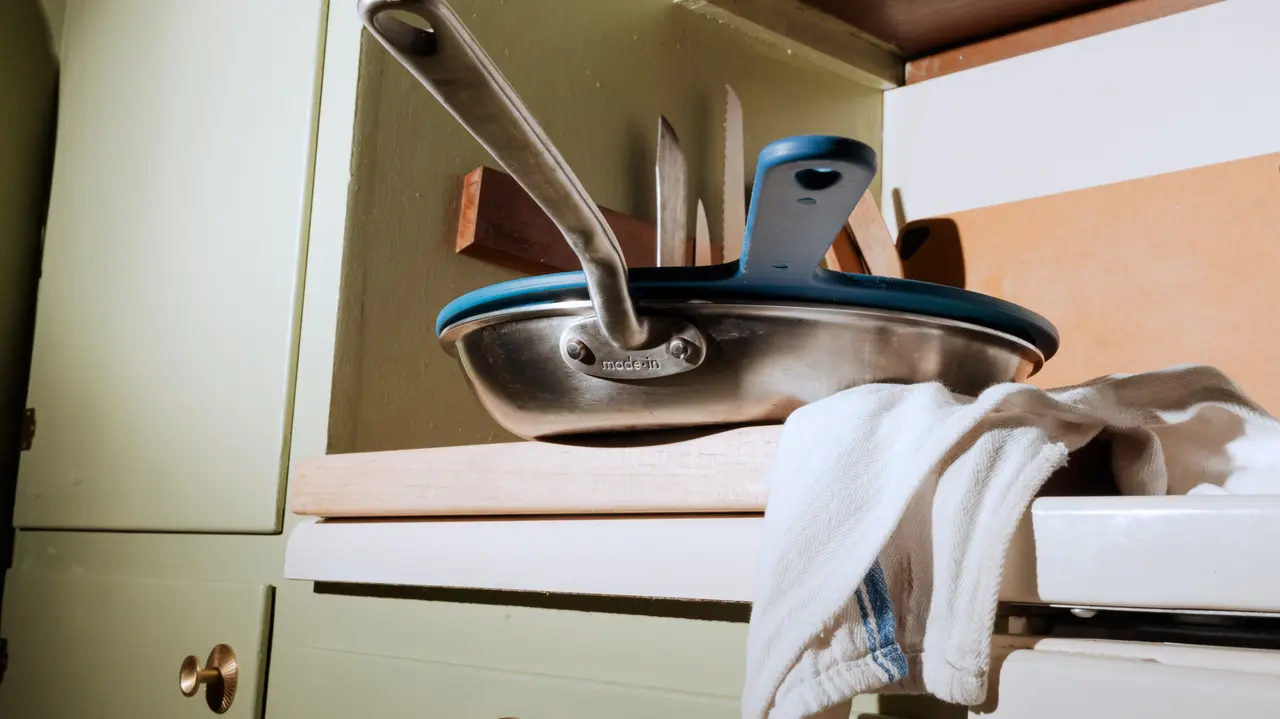
Across our offerings, Saucepans and Saute Pans come with lids, while our Non Stick Frying Pans do not come with a lid. However, they’re compatible with our Frying Pan Silicone Universal Lid, which is in turn compatible with all sizes of our Stainless Clad Frying Pans, the 10" and 12" Carbon Steel Frying Pans, and the Carbon Steel Wok.
Is Non Stick Compatible with Induction Stoves?
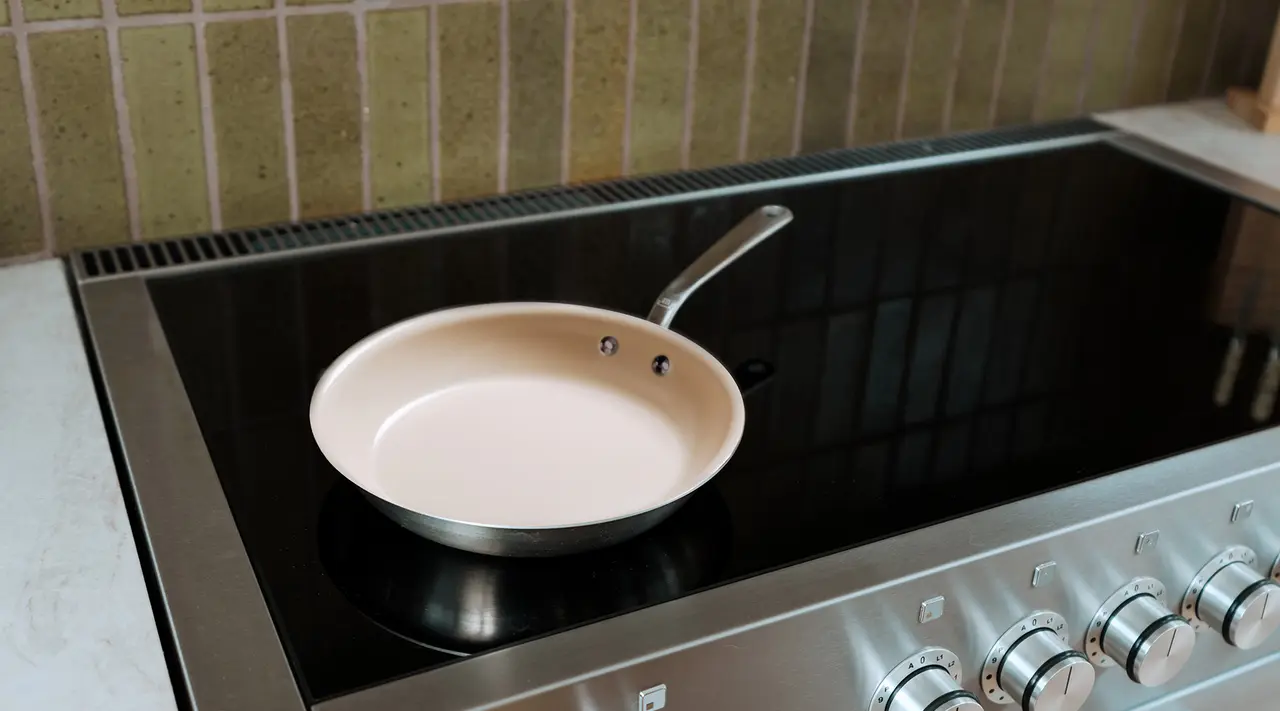
Thanks to its stainless clad body, our non stick collection is compatible with induction stovetops. Many ceramic non stick pieces have a cheaper aluminum core that will not work on induction cooktops, so always check the product materials and reference our guide to the best type of cookware for induction cooking for a more specific breakdown.
What Utensils Can Be Used With Non Stick Cookware?
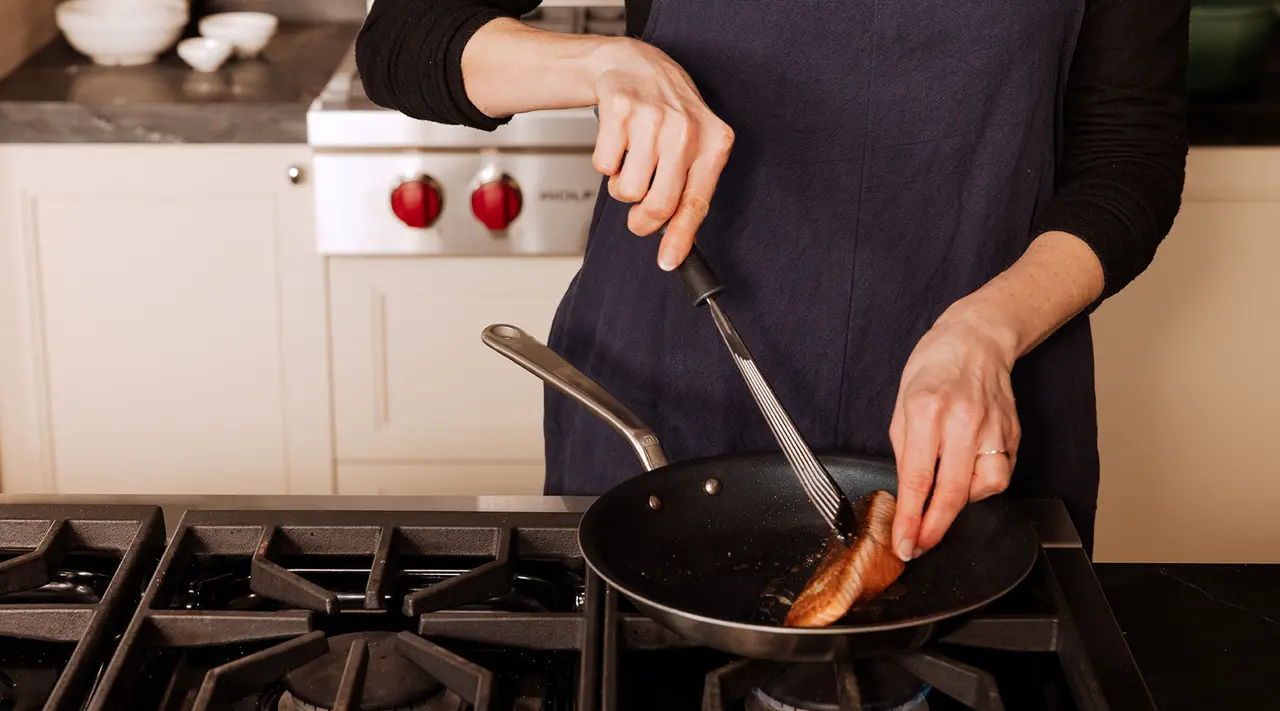
Never use metal utensils—especially knives—as they can scratch the surface of your pan. Using wood and silicone utensils will protect your non stick coating and ensure your pan lasts as long as possible.
Can Non Stick Go in the Oven?
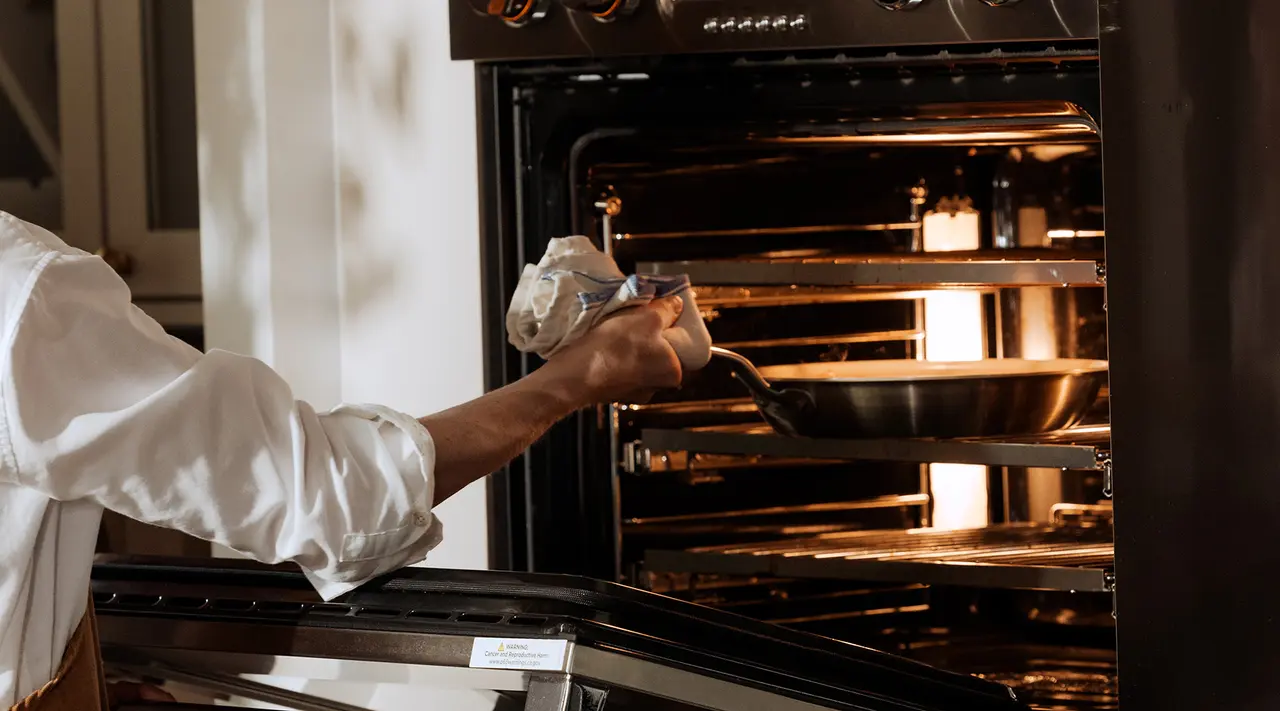
Whether non stick is oven-safe or not depends on the manufacturer. While our ProCoat Non Stick is oven-safe to 500F, plenty of other pans are made cheaply with ceramic coatings or plastic handles, so any time in the oven risks melting, ruining the non stick coating, or even releasing dangerous fumes. Always check the manufacturer’s product information before using non stick in the oven.
Can You Recycle Non Stick Cookware?
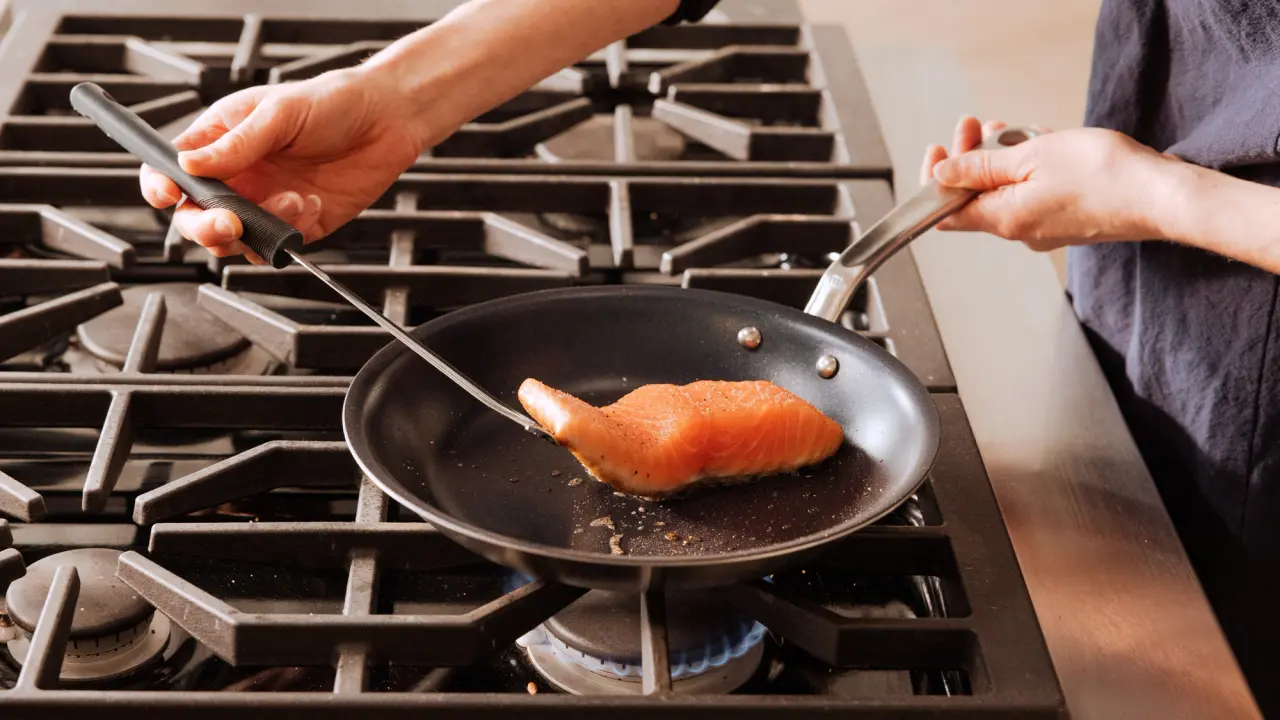
Recycling non stick can be tricky, but Made In offers a mail-back recycling program that makes it easier to dispose of and repurpose old pans that you no longer use. We accept all non stick pans, whether they’re made by us or not. We’ll buff your spent pans so they can be rehomed via a Habitat for Humanity Restore.
Alternatively, you can donate to a Goodwill or Salvation Army location or a neighbor through a Buy Nothing group.
Is Non Stick Sustainable?
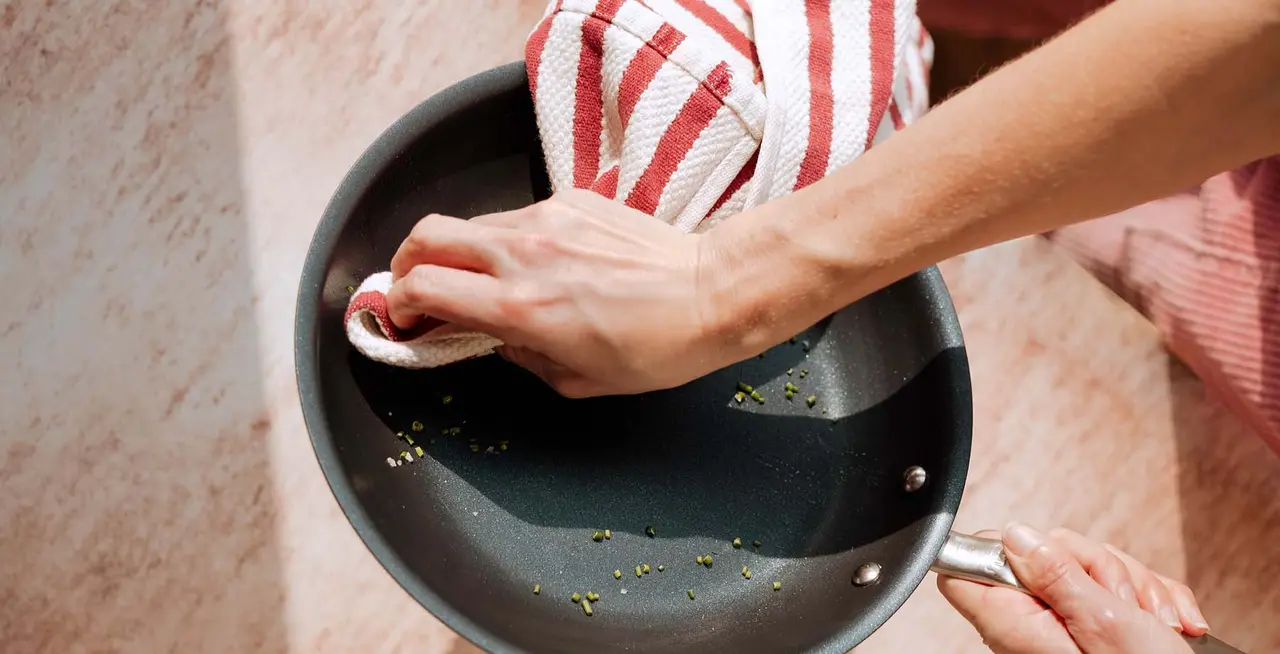
We’ve spent a long time thinking about whether non stick cookware is sustainable, and it’s why we made sure ours is so high-quality that it lasts. Where cheap non stick needs to be replaced within months, ours last for years, meaning there are fewer produced and even fewer in landfills. We also set up our mail-back recycling program to make them even greener.
Ready to Shop?
There you have it: Non stick cookware can be a sustainable, powerful, and versatile tool that does so much more than make perfect scrambled eggs (though it definitely does that, too). Head to our ProCoat Non Stick Cookware collection to try it for yourself.
